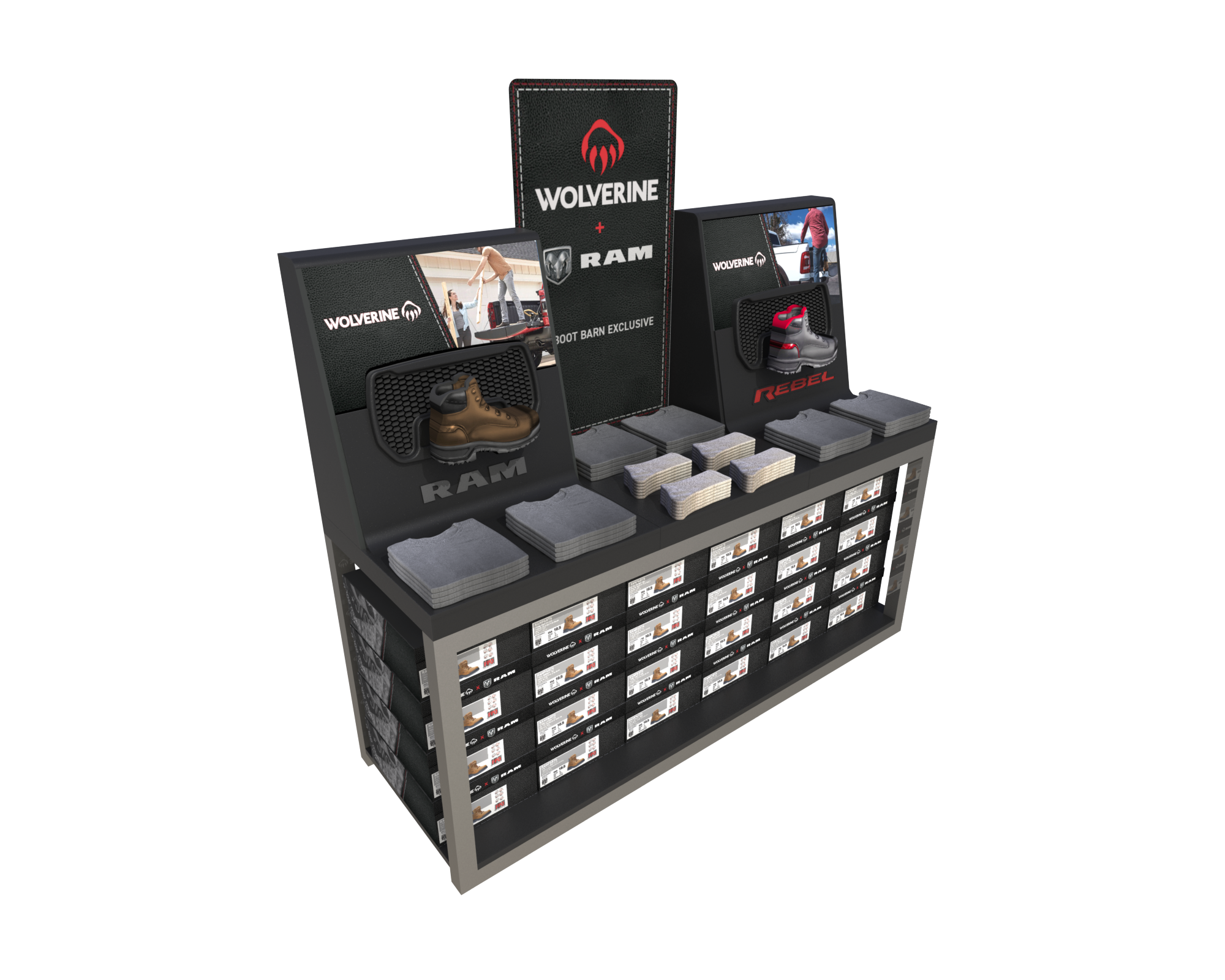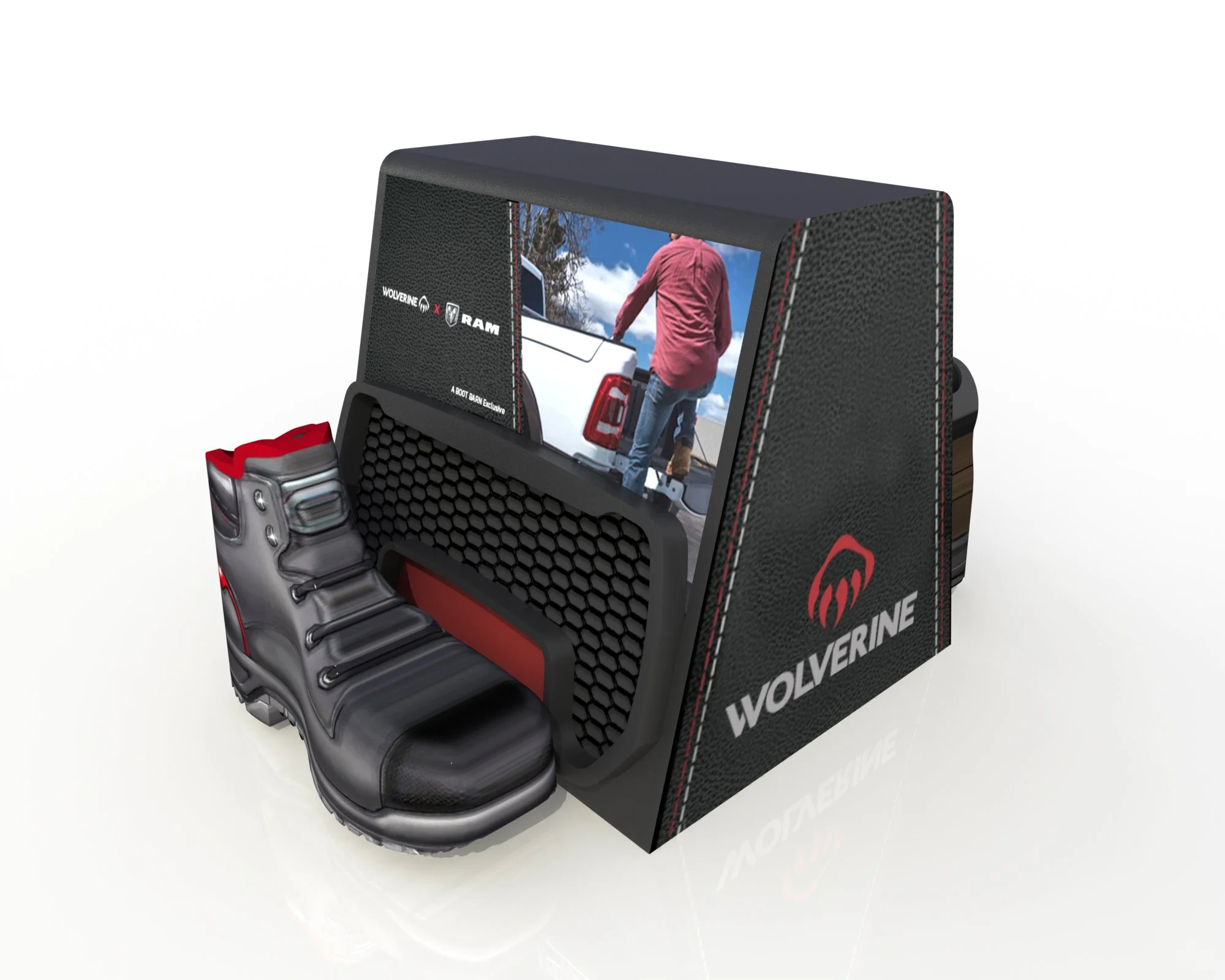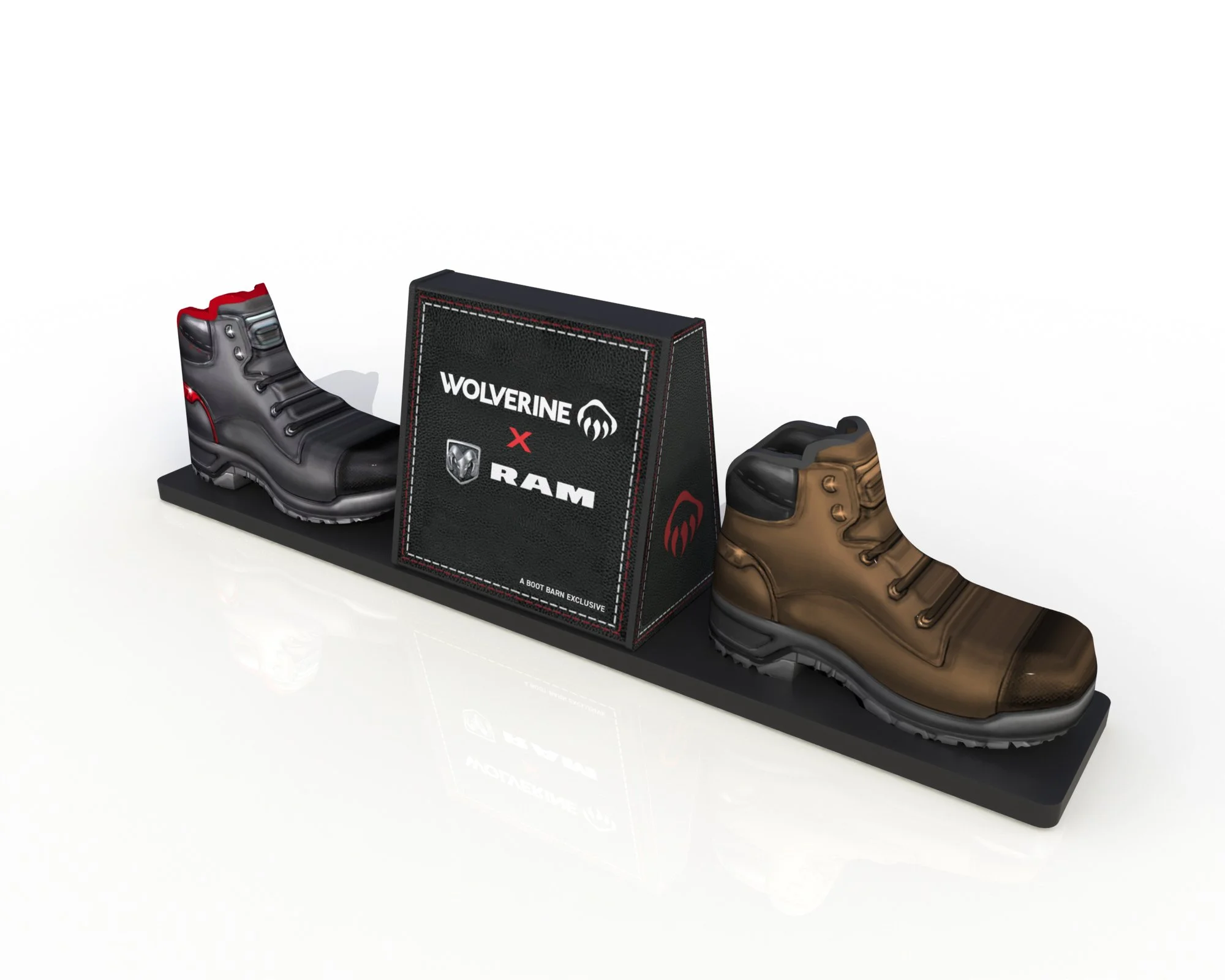The Ultimate Guide to Footwear Displays in 2025
Let’s be honest—most footwear displays feel like an afterthought. Stacks of boxes. Awkward shelves. Maybe a graphic panel thrown in. In 2025, that’s not good enough.
Today’s shoppers are informed, intentional, and ready to buy—but only if your store gives them a reason to. Displays aren’t just about visibility. They’re about helping people make choices, connect with a brand, and feel like they’re in the right place. And if your display system isn’t doing that? You’re leaving value—and loyalty—on the floor.
This guide isn’t just about what to build. It’s about how to think—about display as strategy, storytelling, and a living system that evolves with your customers.
The State of the Footwear Industry in 2025
The global footwear market is projected to top $430 billion this year (Statista, 2025). Demand is growing, but so is complexity—SKUs are ballooning, and shoppers are more product-savvy than ever.
A few big shifts to note:
DTC is plateauing—return costs and CAC are real pain points
In-store discovery is rebounding—64% of younger shoppers prefer it (RetailDive)
Product overlap is high—style, wellness, sport, and comfort blur together
That means displays have to work harder—not just to hold shoes, but to frame stories, answer questions, and earn trust in seconds.
The Role of the Store in a Post-DTC Era:
If they’re in the store, they are already interested. Footwear buyers do their research. They’ve read reviews. They’ve seen your campaign. If they’re walking into a store, it means they want to validate what they already believe—or prove it wrong.
Your display should:
Reinforce confidence
Clarify the why between SKUs
Make comparing easy, visual, and quick
And all of that has to happen with or without staff.
MAKE THE DISPLAY FEEL LIKE THE BRAND:
If your brand voice stops at the packaging, you’ve already missed the mark. Great retail displays should extend brand identity just as strongly as a website or flagship store, no matter the touch point.
Mirror digital UX: clear hierarchy, bundled suggestions, “compare” prompts
Match tone and visual identity: materials, colors, proportions, messaging
Feel tactile and contextual—not generic
Build for modular updates—seasonal flips, product launches, promos
EXAMPLE: Wolverine x RAM
Axis Display Group built a retail display system that blended Wolverine’s grit with RAM’s utility. Tread lines, leather textures, stitching, and grille patterns turned heads—but more importantly, they turned recognition into engagement. Shoppers knew the narrative before reading ever reading a word.
Displays That Tell Stories—Directly and Indirectly
Display storytelling works two ways:
Direct: includes signage, graphics, touchscreens, staff guidance
Indirect: shows instead of tells - through layout logic, product curation, bundling, tone, sensory cues, and subtle brand cues
Today’s footwear displays need both. But great storytelling isn’t instinctual—it’s strategic. It starts before design and runs through every inch of the final fixture.
At AXIS, we use a Story Roadmap approach to design displays that reflect real customer behavior—not marketing myths. We ask better questions before ever sketching a concept:
What activities and lifestyles do our shoppers live out?
What are they feeling or solving for when they shop?
Do they know the full potential of the product—or do they need to see it?
Where do our product promises intersect with their values?
How do our in-store customers differ from online?
Who are they influenced by? What do they trust?
The answers drive how we frame the display experience. They help define what information to highlight, what layout logic to follow, and what emotional cues matter. They also shape how we differentiate storytelling across brand tiers, product lines, and store formats.
Whether your brand is speaking directly or setting the scene for people to draw their own conclusions, a roadmap ensures that storytelling doesn’t just “happen”—it happens on purpose.
Personalization that solves, not sells
Personalization in retail isn’t about gimmicks. It’s about removing friction from the decision process.
If a shopper is trying on a shoe in 2025, they’ve already done the research. They likely know the style, the size, maybe even the color. But the moment something goes wrong—out of stock, confusing fit, no staff available—you risk losing the sale entirely.
That’s where smart display systems come in. The role of personalization here isn’t flash—it’s function.
Great displays anticipate:
What customers need to validate their decision
Where they might get stuck
How to offer a next-best action (not just a dead end)
That might mean:
A QR code that pulls up real customer reviews or an at-home try-on option
A screen that helps find the right size or color in nearby stores
A kiosk that lets them build and order their own pair, on the spot
And when staff aren’t available? The display itself can guide the customer forward—minimizing lost sales and boosting confidence.
Tech That Clears a Path, Not Clutters It
The right tech in a retail display doesn’t need to be flashy. It just needs to work—helping shoppers find what they need, understand what makes it different, and get it, even if it’s not on the shelf.
Examples that add value:
QR codes for quick access to sizing guides, reviews, or product variants
Screens that show inventory, customization options, or product education
Lift-to-learn tech that triggers details when a product is picked up
Kiosks that connect in-store exploration with online availability
Some brands are beginning to connect physical displays with in-app “store mode” features—triggering product-specific content, local inventory, or fit guidance when a shopper scans a QR or nears a smart display. The display becomes the cue; the phone becomes the companion. When they work together, shoppers feel supported without needing to ask.
Planning Displays That Don’t Age Out
Most displays aren’t built for longevity—they’re built for a moment. But retail isn’t static.
At AXIS, we design for the long game. Our custom displays are built as modular, scalable systems—made to flex with your brand’s evolving needs, not just one product drop. Whether you're flipping for seasons, updating messaging, or expanding formats, our solutions are engineered to shift easily and look intentional doing it.
A modern footwear display should:
Flex with seasonal campaigns and product changes
Make graphic and messaging swaps easy
Include infrastructure for tech—even if it’s not added right away
Solve for common gaps, like partial stock or unavailable SKUs
Scale from a single store pilot to a national rollout—without starting from scratch
With the right design strategy, your display isn’t a short-term fix—it’s a platform that grows with you.
Let’s Build Something Smarter
Whether you're rethinking your footwear fixture strategy or planning a new store experience, AXIS helps you connect the dots between vision and execution. We specialize in custom retail systems that bring clarity, performance, and brand power to every square inch.








